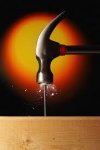Just started with a new artist recently and am brainstorming a way to improve the money channel mix. Currently driving an LS9-32 for all mixes (6 mixes of stereo in ears). Money channel is Shure UHF-R with either Beta 58 or KSM9 capsule, then in to some Digitech tube preamp thing (don't ask.......I just took the gig a couple few weeks ago and inherited a lot of interesting stuff mix wise as well), then into the LS9. I am wanting to change the signal path on his mic to be strictly analog (because we fly a lot and flying an LS9 or a memory stick is easier then a Heritage). Basically what I am thinking is all other 27 channels are mixed in the LS9, split the output of the UHF-R, one channel back into the LS9 for the band mixes, other side heads to an XL42 as the pre and EQ. Same instrument mix and such from within the LS9, his console mix comes out into the APB single space rack mount mixer as a stereo pair, output of the XL42 into another channel on the APB, APB takes care of the analog summing duties on his mix and eliminates the occasional bit of digital headroom issues I am having (did I mention this mix has the vocal a tad hot in it?). I think it should work. Cue wise, I just run a backup pack on his channel and am generally on his mix for most of the 90 min anyways, not that hard to move headphone plugs over.
FWIW (cause someone will probably ask). PSM900, UE16, hearing is good, yadda yadda. Just likes his vocal to be waaaaaaaaayyy present. Am I barking up a strange tree or am I on to a viable solution to something here.
And yes, in a perfect world I would much rather be driving anything other than a Yamaha, but it is common, easy to get at some locations when we fly, and it does work for the task at hand in a convenient package.
FWIW (cause someone will probably ask). PSM900, UE16, hearing is good, yadda yadda. Just likes his vocal to be waaaaaaaaayyy present. Am I barking up a strange tree or am I on to a viable solution to something here.
And yes, in a perfect world I would much rather be driving anything other than a Yamaha, but it is common, easy to get at some locations when we fly, and it does work for the task at hand in a convenient package.

